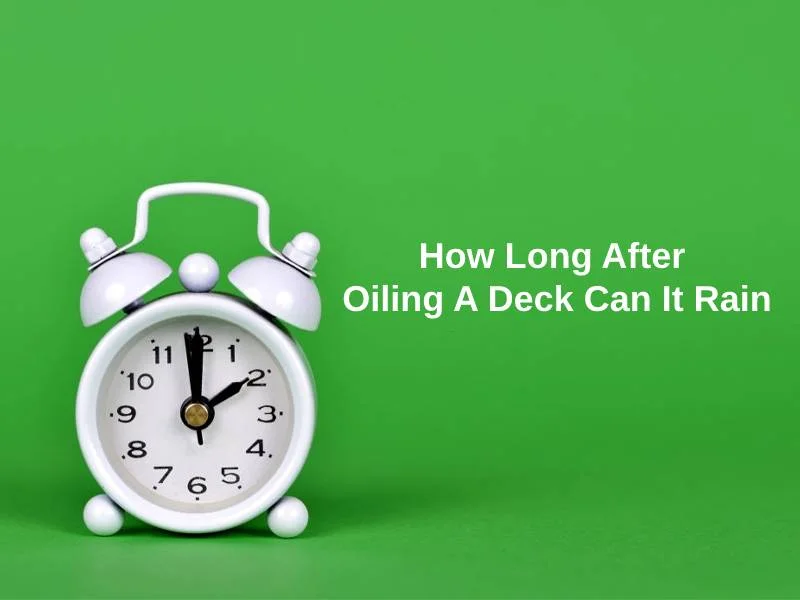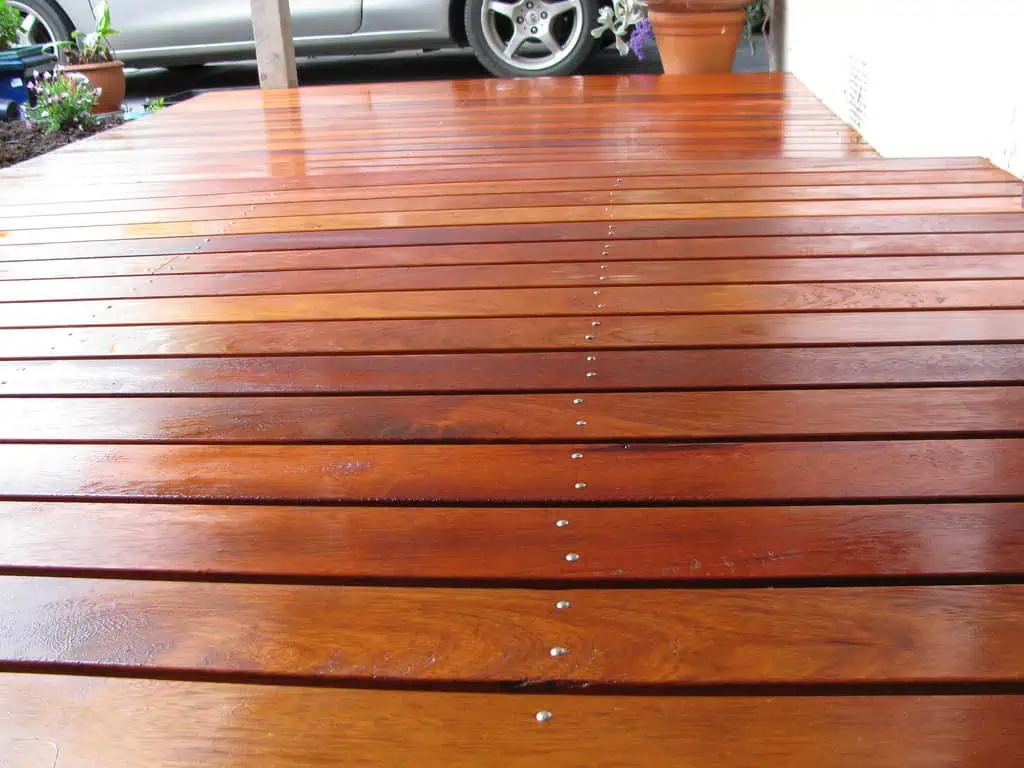Exact Answer: At least 48 hours
Oiling a deck is an important protective measure that is performed to preserve the deck wood. In addition, it also helps replace the natural oils within the wood, which eventually fade over time.
In addition, since decking oils are rainproof and contain ultraviolet blockers that protect the shield from harmful radiation, the oils make the wood less prone to sun damage.
Oiling a deck involves applying the decking oil in long, and steady strokes along with the wooden board. Never rush the application process as this may result in an uneven final finish. The most imperative step to take before oiling a deck is to clean it completely to remove dirt, dust, and grime that is present on the wood. These impurities can prevent the oil from soaking into the wood and penetrating the surface grain.
It is advised to oil a deck regularly, every 12 to 24 months, in order to maintain a proper condition.

How Long After Oiling A Deck Can It Rain?
| Objective | Duration |
| Drying time for water-based oils | Longer drying time |
| Drying time for oil-based oils | Shorter drying time |
| Time between oiling deck and rain | 48 hours |
Decking oils are confused with decking stains, which are almost the same compounds, except they serve a different purpose. Decking oils are used to protect and preserve the wood from natural weathering and foot traffic, whereas decking stains are varnish-like substances that are mostly used to enhance the appearance of the deck, by changing the colour of the decking boards.
Decking oils come in two different types: water-based oils and soil-based oils. Decking oils protect the wood by penetrating into the surface grain of the decking boards. This allows them to work effectively from within, to preserve the wood from problems such as cracks, splitting, warping, and water damage. Preventing water damage also puts an end to the growth of fungus and mold.
Oil-based decking oils take a shorter time to dry than water-based decking oils. But there are several companies now, that sell water-based decking oils that boast of faster drying time.
It is always recommended that you oil a deck at least 48 hours before rain is forecasted. This time is necessary for the oil to sink into the surface grain of the wood, and dry completely, without the hindrance of water. Any wetness or moisture during this 48 hour period can severely affect the curing process of the decking oil.

Keep in mind that the 48 hour safety period is just an estimate, as there have been many advances in the chemistry of decking oils. Many these days dry at a faster rate, and so may only require 12 to 24 hours before they can be subjected to rain.
Why Does It Need To Take That Long To Rain After Oiling A Deck?
If it rains within 48 hours of oiling the deck, then it can unfortunately cause the water to soak into the wooden boards, and displace the oils. This prevents the oils from correctly adhering to the deck. Displacing the oils from within the surface grain of the wood can make the finish look blotchy and flaky, as opposed to a smooth and uniform appearance.
The interaction between the rain and the decking oils inside the wood can also result in a thinner and less effective final coat. This final coat is bound to be washed off in future rains, or naturally weathered away easily.
In addition, the decking boards will be easily subjected to the aforementioned problems such as sun damage, water damage, splitting, cracking, mold, and fungus growth.
Signs of rain damage on the oiling include blotchy patches, white spots, and tiny pockets across the boards.
Although decking oils seem dry on the outside, within a few hours after the initial application, it almost always takes up to a week to thoroughly cure, after which the wood will no longer be tacky. Even though it takes up to a week to completely cure, the deck is functionally dry after 48 hours.

If the deck undergoes rain damage, then you may choose to apply a light recoat. If this does not fix the problem, you can also use a wood cleaner and a pressure washer, to wash out the blotches without affecting the coat. Another option is to lightly sand the patches on the wood, to remove them.
Conclusion
Oiling decks is an important part of Australian outdoor living and it is also practiced in other parts of the world. It is a crucial step to protect and preserve your decks, and extend their longevity.
In order to identify if your deck needs to be restored, all you need to do is pour a small amount of water onto an area in the wood. If the water forms a bead that rolls on the top, this means that the decking board is still waterproof and protected. However, if the water sinks to the surface, then it automatically means that the deck has lost its waterproof qualities, and needs to be restored. Thus, it is important to keep track of oiling the deck and ensure that it is done regularly.